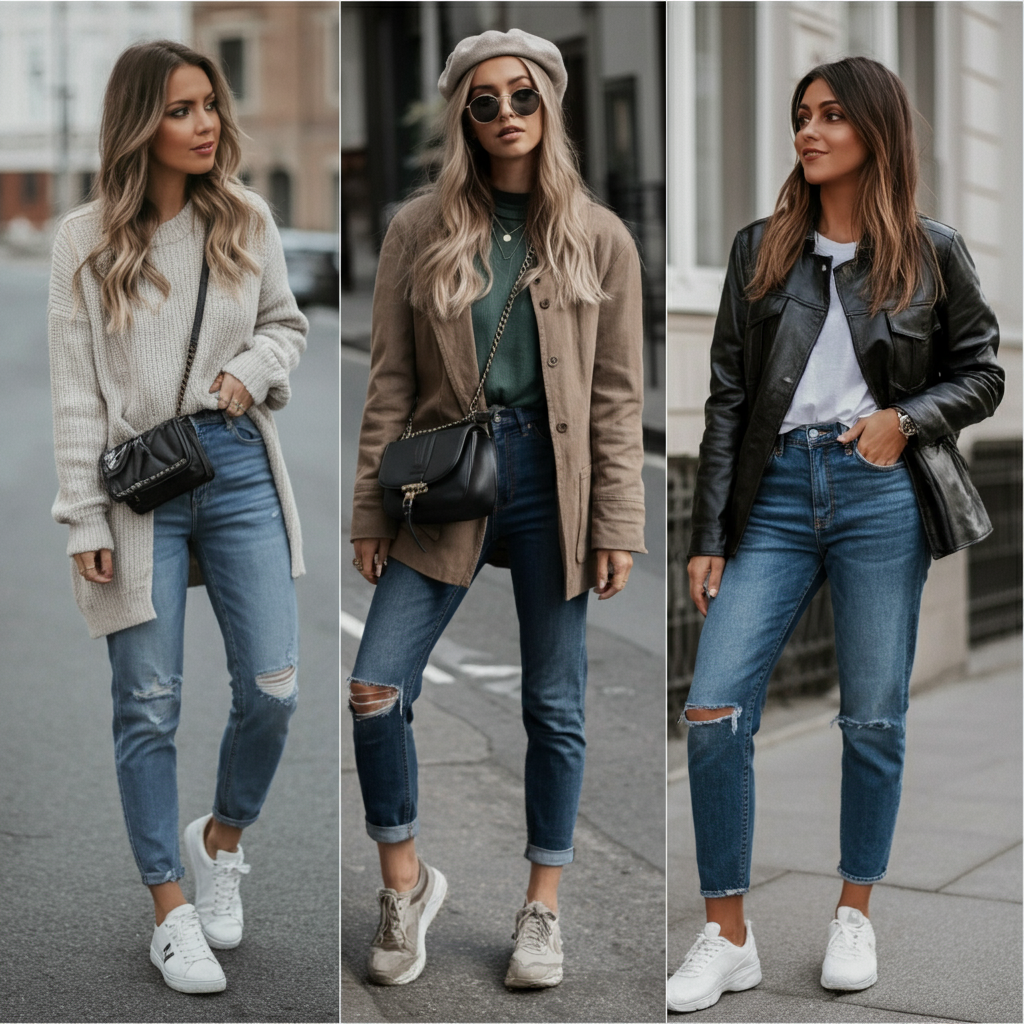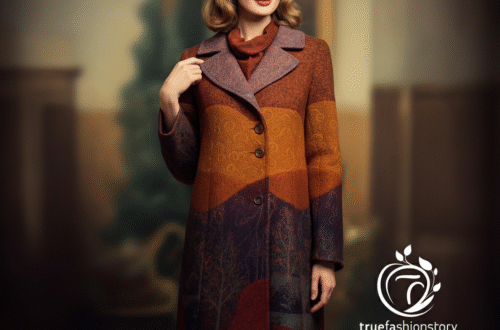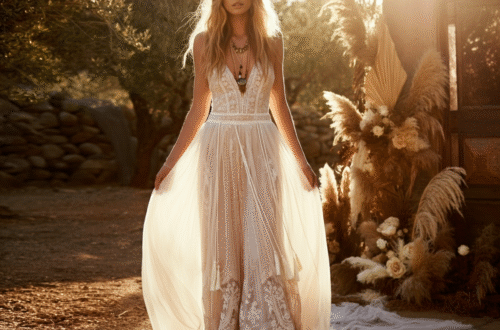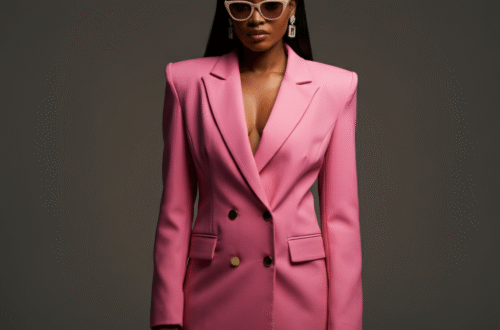Figuring out your personal style can feel like a big puzzle. With so many trends, aesthetics, and clothing options, it’s easy to feel lost. You might ask yourself, “What is my fashion style?” and draw a blank. But don’t worry. Developing a personal style is a journey of self-discovery, not a test with a right or wrong answer. It’s about finding clothes that make you feel confident, comfortable, and, most importantly, like yourself.
This guide will walk you through the steps to define your unique fashion identity. We will explore different style categories, help you take inventory of your current wardrobe, and give you practical tips to build a closet you love. Think of this as your personal roadmap to unlocking a style that truly represents you.
Key Takeaways
- Understanding your personal style is about expressing your personality through clothing.
- Start by looking for inspiration in magazines, online, and from people whose style you admire.
- Analyze your current wardrobe to identify what you love and what you don’t.
- Learn about different core fashion aesthetics to find which ones resonate with you.
- Build a versatile wardrobe by investing in key pieces that fit your lifestyle and style goals.
Understanding the Basics of Personal Style
Before you can answer the question, “what is my fashion style,” it’s helpful to understand what personal style actually means. It’s more than just the clothes you wear; it’s how you wear them. It’s the story you tell the world about who you are without saying a word. Your style is a blend of your personality, lifestyle, interests, and inspirations.
It’s not about following every fleeting trend you see on social media. While trends can be fun to experiment with, a strong personal style is timeless. It’s built on a foundation of pieces that you feel great in, regardless of what’s currently popular. Think of your favorite movie character or a celebrity whose outfits you always love. They have a distinct look because they stick to what works for them. Developing this sense of self in your fashion choices is the ultimate goal.
Why Defining Your Style Matters
Having a defined fashion style can simplify your life in many ways. It makes getting dressed in the morning faster and less stressful. When your closet is filled with items that you love and that reflect your personality, creating outfits becomes an enjoyable creative process rather than a chore.
A clear style also helps you shop smarter. You’ll know exactly what you’re looking for, which prevents impulse buys and saves you money in the long run. Instead of buying a trendy item that you’ll only wear once, you’ll invest in quality pieces that you’ll cherish for years. This approach is more sustainable and helps you build a cohesive wardrobe where everything works together. Ultimately, a strong personal style boosts your confidence because you feel good in what you’re wearing.
Step 1: Gather Your Fashion Inspiration
The first step in finding your style is to look for inspiration. Think of yourself as a detective gathering clues about your fashion identity. Pay attention to what catches your eye. This is a fun, creative process where there are no rules.
Where to Find Style Inspo
- Social Media & Pinterest: Platforms like Pinterest and Instagram are visual goldmines. Create a dedicated board or collection for outfits you love. Don’t overthink it; just save anything that speaks to you. Over time, you’ll start to see patterns emerge.
- Magazines and Blogs: Flip through fashion magazines or browse style blogs. Cut out or screenshot looks that you’re drawn to. Notice the colors, textures, and silhouettes you save most often.
- People Watching: Look at the style of people around you—friends, family, or even strangers on the street. What do you admire about their outfits? Is it their use of color, their sharp tailoring, or their comfortable-casual vibe?
- Movies and TV Shows: Fictional characters often have very defined wardrobes. Think about characters whose style you find iconic. What elements of their look could you incorporate into your own?
As you collect these images, start analyzing them. What do they have in common? Are you drawn to neutral colors or bold patterns? Do you prefer structured pieces or soft, flowing fabrics? These clues are the building blocks of your personal style.
Step 2: Conduct a Wardrobe Audit
Now it’s time to turn your attention to your own closet. A wardrobe audit is a crucial step to figure out what is working for you and what isn’t. Be honest with yourself during this process. The goal is to create a closet that is 100% you.
How to Analyze Your Closet
Set aside some time and take everything out of your closet. Create three piles:
- The “Love It” Pile: These are your absolute favorite items. They fit you perfectly, make you feel great, and you wear them all the time. These pieces are the core of your personal style. Ask yourself why you love them. Is it the fit, the color, the fabric, or the memory associated with them?
- The “Maybe” Pile: This pile is for items you’re unsure about. Maybe they don’t fit quite right, the color is off, or you just never seem to reach for them. Put these items in a box and store them away for a few months. If you don’t miss them, it’s time to let them go.
- The “Get Rid Of It” Pile: This is for anything that is damaged, doesn’t fit, or no longer feels like “you.” Be ruthless here. These items are just taking up space. You can choose to donate, sell, or recycle them.
Once you’re left with your “Love It” pile, examine it closely. These clothes hold the key to defining your style. You’ll likely see a clear theme in terms of color palette, fit, and overall vibe.
Step 3: Explore Different Fashion Styles
With your inspiration gathered and your wardrobe sorted, you can start exploring established fashion aesthetics. Think of these as templates you can customize. You might find you fit perfectly into one category, or you may be a blend of two or three.
Common Fashion Style Categories
Here are some of the most common style types. See which ones resonate with the patterns you’ve identified in your inspiration and your “Love It” pile.
Classic Style
If you love timeless pieces like a crisp white shirt, a tailored blazer, and well-fitting trousers, you might have a classic style. This aesthetic focuses on clean lines, neutral colors, and high-quality fabrics. It’s sophisticated, polished, and always in style.
Bohemian (Boho)
The bohemian style is for the free spirits. It features flowy dresses, earthy tones, natural fabrics like cotton and linen, and artistic patterns. Accessories are key here, with lots of layered jewelry, fringe bags, and wide-brimmed hats.
Minimalist Style
Minimalism is all about “less is more.” This style uses a simple color palette, often neutrals like black, white, gray, and beige. The focus is on silhouette, quality, and functionality. Outfits are clean, uncluttered, and effortlessly chic.
Streetwear Style
Rooted in skate and hip-hop culture, streetwear is casual, cool, and comfortable. It includes graphic tees, hoodies, sneakers, and baggy silhouettes. It’s a style that’s constantly evolving and often features bold logos and hyped brands.
Edgy or Grunge Style
This style has a bit of an attitude. It involves a lot of black, leather jackets, band t-shirts, ripped jeans, and chunky boots. It’s about creating a look that is rebellious, dark, and a little bit gritty.
Style Comparison Table
|
Style |
Key Elements |
Vibe |
Color Palette |
|---|---|---|---|
|
Classic |
Tailored blazers, trousers, simple jewelry |
Polished, sophisticated, timeless |
Neutral (black, white, navy, beige) |
|
Bohemian |
Flowy maxi dresses, fringe, embroidery |
Free-spirited, artistic, earthy |
Earth tones, warm colors, prints |
|
Minimalist |
Clean lines, simple silhouettes, quality basics |
Modern, uncluttered, effortless |
Monochromatic, neutral tones |
|
Streetwear |
Graphic tees, hoodies, sneakers, logos |
Casual, comfortable, cool |
Varies widely, can be bold or neutral |
|
Edgy |
Leather, studs, band tees, dark colors |
Rebellious, bold, confident |
Primarily black, dark reds, gray |
Step 4: Define Your Core Style & Create a Mood Board
By now, you should have a clearer idea of your fashion preferences. The next step is to put it all together and define your core style. Give it a name! It could be “Classic with a touch of Edgy” or “Minimalist Boho.” Naming it makes it feel more concrete.
Create a final mood board—either physical or digital—that represents your defined style. This will be your guide for all future fashion decisions. Include your inspiration photos, color swatches, and pictures of your favorite outfits from your own closet. This visual reference will keep you on track as you start building your ideal wardrobe.
Whenever you’re unsure about buying something, consult your mood board. Does this new piece fit with the overall aesthetic? Will it work with the items you already own? If the answer is no, you can confidently walk away.
Step 5: Building Your Ideal Wardrobe
Now for the fun part: building a wardrobe that perfectly reflects your newly defined style. This doesn’t mean you need to go out and buy a whole new set of clothes. It’s about slowly and thoughtfully adding pieces that align with your vision.
Start with the Essentials
Every great wardrobe is built on a foundation of versatile essentials, often called a capsule wardrobe. These are high-quality basics that work with everything else. Based on your style, these might include:
- A great pair of jeans that fits you perfectly.
- A classic white t-shirt.
- A versatile blazer or jacket (e.g., leather for edgy, tailored for classic).
- A simple dress in a neutral color.
- Comfortable yet stylish shoes you can wear every day.
Invest in the best quality you can afford for these items, as you’ll be wearing them often.
Shop with Intention
When you do go shopping, have a list. Know what gaps you need to fill in your wardrobe. This prevents you from getting distracted by sales or trendy items that don’t fit your core style.
Before you buy anything, ask yourself three questions:
- Does this fit my personal style?
- Can I create at least three outfits with it using what I already own?
- Do I feel confident and comfortable in it?
If you can’t say yes to all three, it’s probably not the right piece for you. As noted in a recent https://truefashionstory.com/Blog post on lifestyle trends, being intentional with our choices leads to greater satisfaction. This same principle applies perfectly to building a wardrobe you love.
Conclusion: Embrace Your Style Journey
Answering the question “what is my fashion style?” is an ongoing process of discovery. Your style will evolve as you grow and change, and that’s part of the fun. It’s not about achieving a “perfect” wardrobe, but about creating a collection of clothes that helps you express yourself and feel great every day.
Embrace experimentation. Try new things, but always stay true to what makes you feel like you. Use your style as a tool for self-expression and confidence. Now that you have the tools and knowledge, you’re ready to define your look and build a wardrobe that is uniquely and wonderfully you.
Frequently Asked Questions (FAQ)
Q1: How long does it take to find your personal style?
A: There’s no set timeline. For some, it happens quickly, while for others, it’s a longer journey of experimentation. The key is to enjoy the process and not rush it. Your style will naturally become clearer as you pay more attention to what you like.
Q2: Can I have more than one fashion style?
A: Absolutely! Many people blend elements from different styles to create a unique look. For example, you might have a classic style for work and a more bohemian style on the weekends. The goal is to feel authentic, not to fit into a rigid box.
Q3: What if my style changes over time?
A: It’s completely normal for your style to evolve. As your life, interests, and even your career change, so will your fashion choices. A wardrobe built on a foundation of quality basics will make it easier to adapt to these changes without starting from scratch.
Q4: How can I find my style on a budget?
A: Finding your style doesn’t have to be expensive. Start by shopping your own closet. You can also explore thrift stores and consignment shops to find unique, affordable pieces. Focus on building your wardrobe slowly with intentional purchases rather than buying a lot of fast-fashion items.





